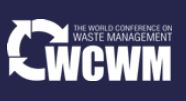EVALUATION OF POTENTIAL APPLICATION OF INDUSTRIAL SYMBIOSIS
DOI:
https://doi.org/10.17501/26510251.2021.1202Keywords:
waste disposal, industrial symbiosis, waste characteristics, waste managementAbstract
Most of the industries in Sri Lanka generate a considerable amount of waste which are either open dumped or disposed without due consideration of the environment and ecosystem. The haphazard disposal of the untreated waste is growing in to a major problem in the country due to high cost of treatment for industries, lack of infrastructure for industrial waste management, ineffective enforcement of environmental regulations and insufficient capacity for waste management of local authorities. The country has not a properly established waste treatment facilities for industrial waste. Industrial symbiosis, which is considered mainly by the reuse of waste from one company as raw material by another, has been applied globally with recognized environmental, economic, and social benefits. However, the potential for industrial symbiosis is not exhausted in existing cases, and there is still a wide range of opportunities for its application. This paper has identified necessary key steps required to develop a conceptual framework to implement industrial symbiosis for manufacturing sector. It has identified three main steps i.e identification of industrial symbiosis potential, network development stage, decision support tool.
Downloads
References
Bavani M.,and L. Phon, (2009). Using worms to reduce organic waste: DBKL to embark on a pilot project soon.Saturday Metro, 5
Bing X., Bloemhof J.M., Ramos T.R.P., Barbosa-Povoa A.P., Wong C.Y., van der Vorst J.G.A.J. Research challenges in municipal solid waste logistics management. Waste Manag. 2016;48:584–592. doi: 10.1016/j.wasman.2015.11.025
Chertow M. and Ehrenfeld j., “Organizing Self-Organizing Systems: Toward a Theory of Industrial Symbiosis,” J. Ind. Ecol., vol. 16, no. 1, pp. 13–27, Feb. 2012
Gupta N., Yadav K.K., Kumar V. A review on current status of municipal solid waste management in India. J. Environ. Sci. (China) 2015;37:206–217. doi: 10.1016/j.jes.2015.01.034.
Vitorino de Souza Melaré A., Montenegro González S., Faceli K., Casadei V. Technologies and decision support systems to aid solid-waste management: A systematic review. Waste Manag. 2017;59:567–584. doi: 10.1016/j.wasman.2016.10.045
Golev, A. and G. D. Corder. 2012. Developing a classification system for regional resource synergies. Minerals Engineering 29: 58–64.
Mirata M. (2004) Experiences from early stages of a national industrial symbiosis programme in the UK : determinants and coordination challenges. J Clean Prod 12:967–983.
Downloads
Published
How to Cite
Issue
Section
License

This work is licensed under a Creative Commons Attribution 4.0 International License.







